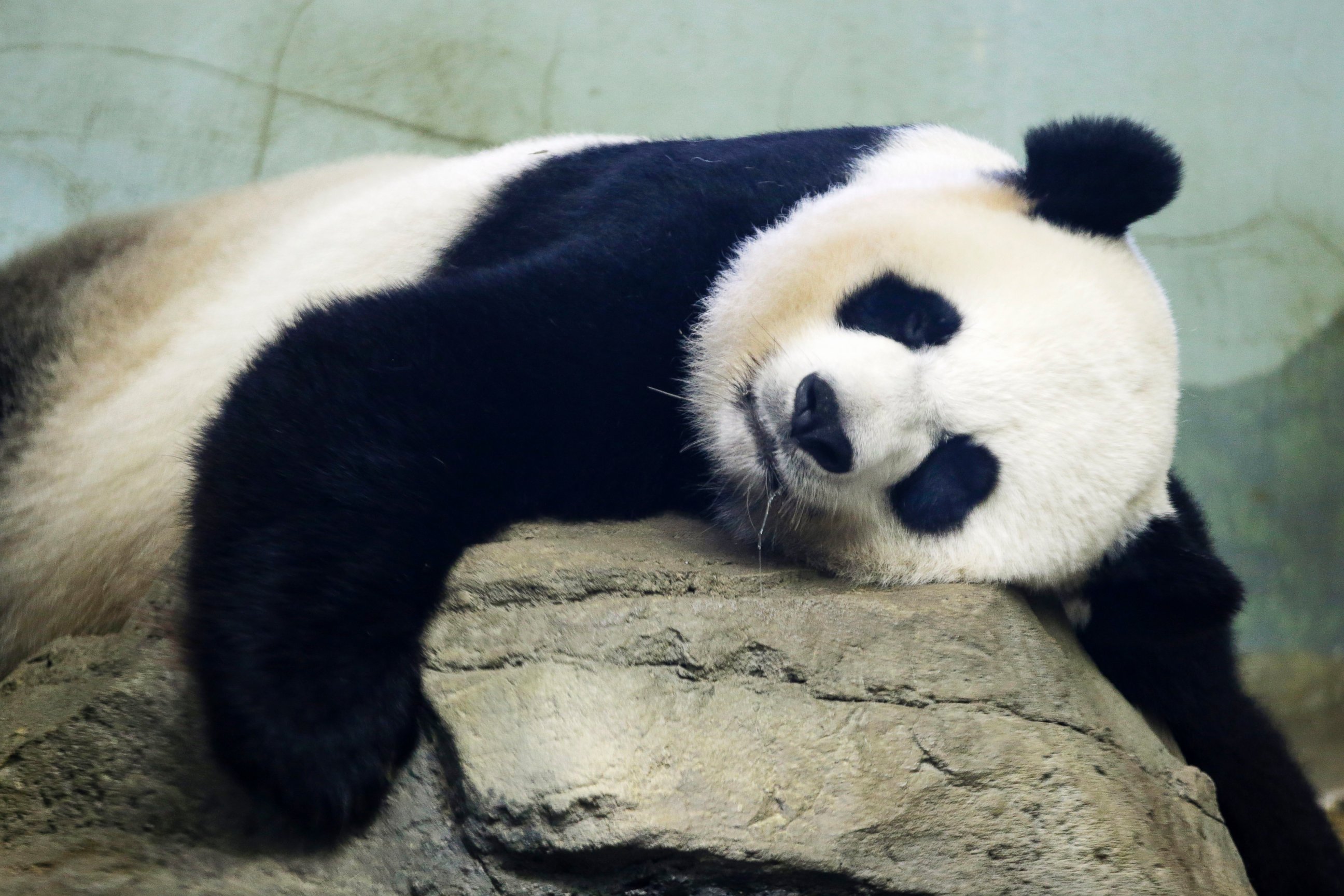National Zoo's Giant Panda, Mei Xiang, Gives Birth to 2 Cubs
Both cubs were born hours apart.
— -- A second panda cub was born from giant female panda Mei Xiang at Smithsonian's National Zoo in Washington, D.C. Saturday night, just hours after the first one.
The National Zoo announced the birth of the second cub via Twitter. Earlier that day, the first panda cub was born at 5:35 p.m.

A spokeswoman for the zoo told ABC News that Mei Xiang, went into labor. The giant female panda's water broke around 4:30 p.m.
"All of us are thrilled that Mei Xiang has given birth," Zoo director Dennis Kelly said in a statement. "The cub is vulnerable at this tiny size but we know Mei is an excellent mother."
At a news conference Saturday evening, Kelly said it wasn't yet known whether the newborn is a boy or a girl, or who the father is -- Mei Xiang was artificially inseminated with sperm from the zoo's male panda Tian Tian and a panda named Hui Hui from Wolong, China, who was determined to be one of the best genetic matches -- but the zoo's chief veterinarian, Don Neiffer, said they are in no rush to examine the baby.
"We're trying not to interfere with mom," he said. "You know there's a great size disparity between the mom and the baby so even if she accidentally did something, it could have consequences."
The two are being given time to bond, but when the time comes, he said, tests will be run to determine the cub's gender and father.
"It's a great time for the two of them. We don't want to disturb that. We don't want to interfere with that. That said, if we get concerned we are prepared to take any emergency actions to get our hand on the baby and see what's going on," he said.
In the meantime, he said, both baby and momma were doing well.
"She's delivered the cub nicely, scooped it right up," Neiffer said. "The cub's been vocalizing, showing us all signs of being healthy and happy. Mom's being a great mother."
Mei Xiang gave birth to a cub named Bao Bao almost two years ago to the day, on August 23, 2013.
Mei Xiang was born in 1998 at a panda research and conservation center in China.




